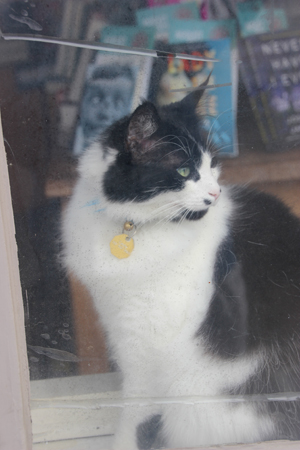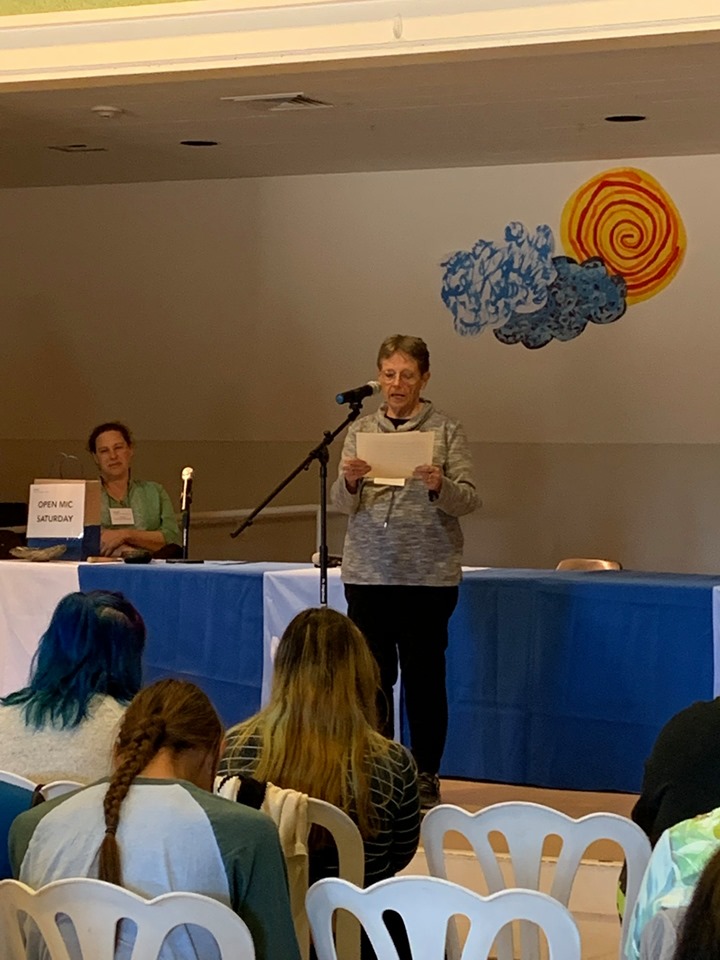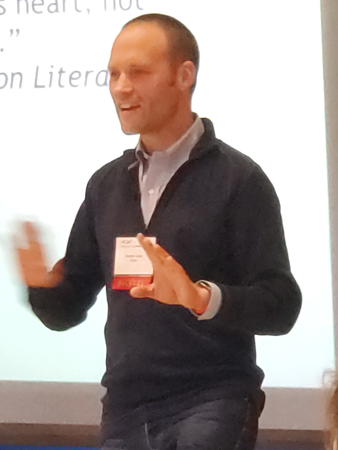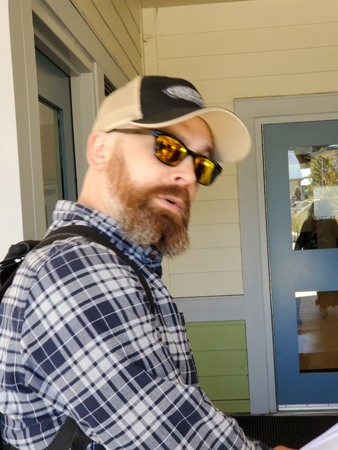
Because I can’t start a Menodcino post without a raven.
The high point of this year’s writing conference was learning that
several of my consigned book sold in the conference bookstore. I wheedled the
day-one bookstore employee into letting me put out five to start with; that was
two more than they recommend. When I came through the bookstore area on Friday,
they were down to one copy. “We had a run on yours,” said Bob, the day-two
bookstore employee. I was giddy. I said with complete casualness, “I have more
in the car.” (Imagine a false trill of laughter following that statement.)
“You do?” he said.
I brought in some more and he changed the number from five to eight. When I
went to pick up my books and my earnings, I’d sold seven of them.
Some bad news – I’d misunderstood the deadline and the bookshop, and my money,
was gone! Not to panic, I just had to go to the brick-and-mortar store on
Sunday to pick up my money and discuss what to do with the remaining book,
which I eventually left consigned there.

Catsby, the bookstore greeter
I assume everyone but me knows how consignment works, but in case you
don’t; the store runs the book/object through their system, collects sales tax
etc, and takes a percentage of the proceeds off the top. Gallery Bookstore does
a 60/40% split (at least for conference-participants) which means the author
gets 60% of the charged price for each book sold.
That was not my profit though. I have the feeling when I’m done with this
process and figure my profit, I will be sad. In figuring out what I “earned,” I
have to look at the cost of the goods sold, which means from my 60% per book I
deduct what I paid for the books (at the author-discount rate) and shipping.
These first few sales will look better than later ones because I got my author
copies thrown into that first batch.
On top of the cost of the books and getting the books, there are other costs
like the printing of the postcards I had made up.
I plan to have some books for consignment at Copperfield’s in both Petaluma and
Sebastopol later in this month.
But enough about me.

Swingset at the middle school where the conference is held. I just really like this photo.
No, wait! It’s all about me. Enough about the book.
The conference is making some changes, modernizing a bit, or probably doing
things that are old by now but look like modernizing to me. Scott Sigler, who
was my workshop leader, also gave a seminar on using podcasts to make your work
available to a larger audience. They continue to expand the discussion of
hybrid publishing and self-publishing, and I think they offered two pitch
sessions this conference. I’ll never use a pitch session, but I think they are
useful and helpful.
The conference continues to offer great food!

Terry Connelly reads from her first-place short story, “The Visitor.” Photo by Donna W. Banta
The second high point (the second-highest point? Oh, grammar, you are
cruel,) was watching my friend Terry Connelly, who won First Place in the short
story category of the contest, read from her suspenseful and disturbing short
story “The Visitor.”

Andrew Karre on Information and Intrigue: “It’s a novel, not a brochure.”
Nearly on a par with that was my one-on-one consultation with Penguin
Random House YA editor Andrew Karre. Andrew will never ever edit or publish
something of mine unless he leaves YA, but he was smart and friendly, positive,
and shares a certain philosophy with me, which meant I had a great time talking
to him and because I showed up a little early we talked a bit beyond the
allotted time. I attended his seminar presentation, called, “Fear Not
Confusion,” where “fear” is the verb in that sentence. (“Do not fear confusion”
does not sound as good.) I liked a thing he said to me, and said again in the
seminar, so much that if I ever were going to get a tattoo this would be it:
“It’s a novel, not a brochure.”
Shobah Rao, who wrote Girls Burn Brighter, taught the short fiction
class. She discussed plot in her seminar. Margaret and I, dyed in the wool
genre writers, attended it and spent the first few minutes looking at each
other going, “What? Huh?”
Rao’s work is more in the general fiction arena, and general fiction writers do
not want to spend time with plot. They want to focus on other things. She
started off soothing the group, saying things like, “I know it’s a weird thing
to talk about, but every book needs to have one. You can do it, really.” I
imagined a public health nurse talking to a group of privileged private
high-school students and suggesting they get tested for HIV disease. Seriously,
like, “I know it’s uncomfortable talking about it in public, but things to have
to happen in your book, and even in a certain order.”
I’m mocking a bit, but then she made us break out the plots of some well-known
works, including fairy tales, and it got fun. She took a look at how other
people have described plot.
Later I bought her book Girls Burn Brighter and started it. I have to
say, while Rao portrayed herself as a plot-newbie: “You mean things have to
happen? I don’t just get to hang out with these characters I’ve created and
watch them fall in love?” that book has plot for days, starting on page four.
It’s not genre-plot, but it there and it is intense and deep and powers the
story just as much as the exquisite language. By the way, do not start that
book if you have other plans for the day.
It was another good year for me. I may write a couple more short posts about my
morning workshop, and the views around Mendocino.

Scott Sigler, who led the Speculative Fiction workshop
